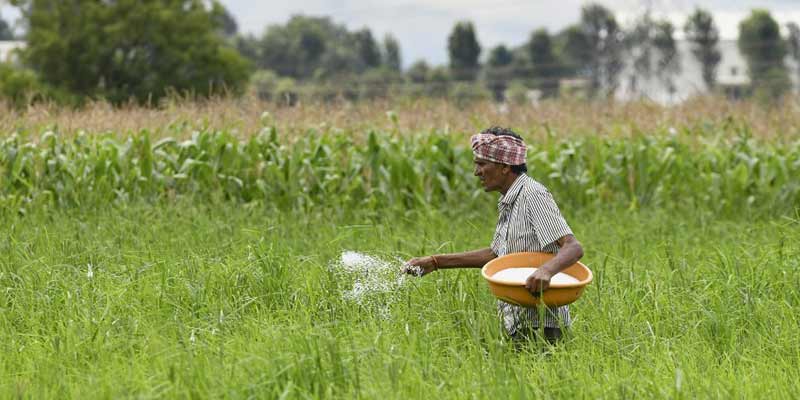- India
- Mar 23
Explainer / Initiatives to boost urea sector
The Cabinet Committee on Economic Affairs, chaired by PM Narendra Modi, has given approval for the proposal of the Department of Fertilisers for extension of applicability of ‘New Investment Policy (NIP)-2012’ for three upcoming units of Hindustan Urvarak & Rasayan Ltd (HURL) at Gorakhpur, Sindri and Barauni.
The government had announced the New Investment Policy (NIP) - 2012 in January, 2013 and its amendment in October, 2014 to facilitate fresh investment in the urea sector and to make India self-sufficient.
Urea sector
• Fertilisers are organic or inorganic substances containing chemical elements that improve the growth of plants and the fertility of the soil. A fertiliser is either mined or manufactured material containing one or more essential plant nutrients that are immediately or potentially available in sufficiently good amounts. Fertiliser is one of the most crucial ingredients for ensuring food, nutrition security.
• Fertiliser accounts for large fiscal subsidies (about Rs 65,000 crore), the second-highest after food in India.
• Fertilisers constitute 20 per cent of the cost of cultivation of various crops, according to the Commission for Agricultural Cost and Prices (CACP). Hence, the importance of the fertiliser sector in ensuring food and nutrition security is well recognised.
• The government is making available fertilisers, namely urea and 24 grades of Phosphatic and Potassic (P&K) fertilisers to farmers at subsidised prices through fertiliser manufacturers/importers.
• Urea is a source of nitrogen, an essential nutrient crucial for crop growth and development. Urea is the most important nitrogenous fertiliser in the country because of its high nitrogen content. It also has industrial applications such as the production of plastics and as a nutritional supplement for cattle.
• Urea is being provided to the farmers at a statutorily notified Maximum Retail Price (MRP).
• The urea sector contributes significantly to fertiliser production and consumption in the country. It accounts for 60 per cent of the total fertiliser consumption and 50 per cent of the total fertiliser imports in terms of volume.
• At present, there are 32 large size urea plants in the country manufacturing urea.
• In order to tackle the import dependency and make the subsidy regime more efficient and transparent, the government has taken several steps.
• The government has made it mandatory for all the domestic producers of urea to produce only neem coated urea.
• The production of urea during the year 2020-21 was 246.03 LMT.
• India’s dependency on import at present is to the extent of 25 per cent of country’s requirement of urea.
Neem coated urea
The government has made it mandatory for all the domestic producers of urea to produce only neem coated urea. Neem coated urea is neem oil-coated urea specially developed only to be used as agricultural fertiliser. The coating of neem slows the nitrification of urea thereby helps in increased absorption of nutrients in the soil as well as reduces groundwater pollution.
Nano urea
Nano fertiliser holds great promise for application in plant nourishment because of the size-dependent qualities, high surface-volume ratio, and unique properties. Nano fertilisers release plant nutrients in a controlled manner contributing to higher nutrient use efficiency. Indian Farmers Fertilizers Cooperative Limited (IFFCO) has introduced nano urea, an innovative solution for reducing environmental pollution and soil health.
New Investment Policy (NIP)–2012
• The government notified New Investment Policy (NIP)–2012 on January 2, 2013 (and its amendment in October 2014) to facilitate fresh investment in urea sector and to make India self-sufficient in the urea sector.
• Based on NIP–2012, any interested company can establish urea plant in the country.
• A committee of secretaries comprising secretary (fertilisers), secretary (department of expenditure), secretary (ministry of petroleum and natural gas) and secretary (agriculture) with secretary (fertilisers) as chairman is constituted to take decisions on various issues which will arise during the implementation of NIP-2012.
Some features of NIP – 2012 are:
i) The policy supports gas based plants.
ii) It has structure of a flexible floor and ceiling price calculated at delivered price of gas.
iii) It supports revival of closed units.
iv) It encourages investment by Indian industry in joint venture abroad in resource rich countries.
New Urea Policy-2015
The government has also notified the New Urea Policy (NUP)-2015 on May 25, 2015 for existing 25 gas based urea units with the objectives of
(i) maximising indigenous urea production.
(ii) promoting energy efficiency in urea production.
(iii) rationalising subsidy burden on the government.
Hindustan Urvarak & Rasayan Ltd (HURL)
• HURL, incorporated in June, 2016, is a joint venture of Coal India Ltd, NTPC and Indian Oil Corporation. It is reviving the erstwhile Gorakhpur and Sindri Units of FCIL and Barauni Unit of GFCL by setting up new gas based urea plants with an installed capacity of 12.7 lakh tonnes per annum each. The cost of the three HURL urea projects is Rs 25,120 crore. GAIL is supplying natural gas to these three units.
• The commissioning of the three units will add 38.1 lakh tonnes per annum urea production in the country.
• The project will not only improve the availability of fertiliser to farmers but also give a boost to the economy in the region including development of infrastructure like roads, railways, ancillary industry etc. besides ensuring food security to the nation.
• These three facilities aim to meet the demand for urea in seven states — Uttar Pradesh, Bihar, Jharkhand, Chhattisgarh, Madhya Pradesh, West Bengal and Odisha.
• All three HURL units have various unique features like blast-proof control room equipped with DCS (distributed control system), ESD (emergency shutdown system) and environment monitoring systems. There is no offsite waste water disposal in these plants.
• The systems are operated by the highly motivated, dedicated, well-trained operators. HURL-Gorakhpur unit has India's first air-operated bullet-proof rubber dam of 65 metres length and 2 metres height.
Manorama Yearbook app is now available on Google Play Store and iOS App Store

